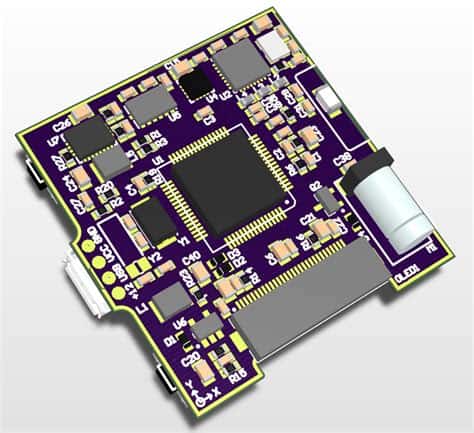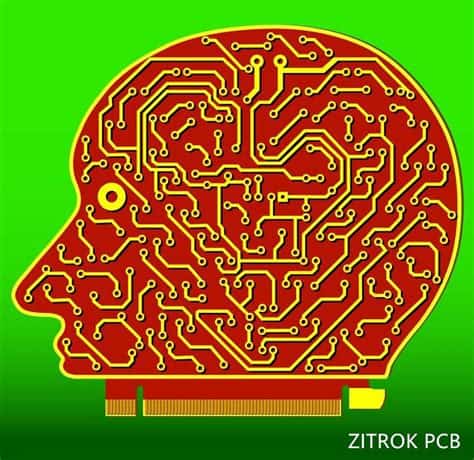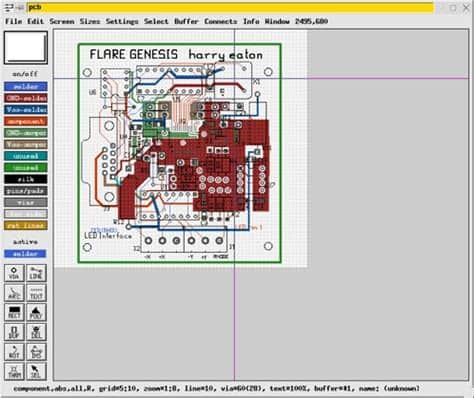What is Open-Source PCB Design?
Open-source PCB design refers to the use of freely available tools, libraries, and resources for designing and manufacturing printed circuit boards. These tools are typically developed and maintained by a community of users who contribute to their improvement and share their knowledge with others.
Advantages of Open-Source PCB Design
- Cost savings
- Flexibility and customization
- Community support and collaboration
- Transparency and learning opportunities
Popular Open-Source PCB Design Tools
There are several open-source PCB design tools available, each with its own strengths and weaknesses. Here are some of the most popular options:
KiCad
KiCad is a free and open-source PCB design tool that offers a complete suite of tools for schematic capture, PCB layout, and gerber file generation. It has a large and active community of users and developers, making it a popular choice for hobbyists and professionals alike.
| Feature | Description |
|---|---|
| Cross-platform | Runs on Windows, macOS, and Linux |
| Integrated environment | Schematic capture, PCB layout, and gerber generation in one package |
| Extensive library | Large collection of component footprints and symbols |
| Active community | Vibrant community for support and collaboration |
Eagle
Eagle is a popular PCB design tool that was recently acquired by Autodesk and made available as a free, open-source software for non-commercial use. It offers a user-friendly interface and a large library of components.
| Feature | Description |
|---|---|
| User-friendly interface | Intuitive and easy to learn |
| Large component library | Extensive collection of pre-made components |
| Autodesk support | Backed by Autodesk’s resources and expertise |
| Free for non-commercial use | Accessible to hobbyists and students |
gEDA
gEDA is a collection of open-source tools for electronic design automation, including schematic capture, PCB layout, and simulation. It is known for its flexibility and extensibility, allowing users to customize the tools to their specific needs.
| Feature | Description |
|---|---|
| Modular design | Separate tools for different tasks, allowing for customization |
| Extensible | Can be extended with user-written scripts and plugins |
| Support for multiple file formats | Imports and exports various file formats |
| Active development | Continuously improved by the open-source community |

Making the Transition to Open-Source PCB Design
Transitioning from proprietary to open-source PCB design tools can be challenging, but with the right approach, it can be a smooth and rewarding process.
Learning the Tools
The first step in making the transition is to familiarize yourself with the open-source tools available. Most open-source PCB design tools offer extensive documentation, tutorials, and user forums to help you get started.
Migrating Existing Designs
If you have existing designs created using proprietary tools, you may need to convert them to a format compatible with your chosen open-source tool. Some open-source tools offer import features for popular proprietary file formats, while others may require manual re-creation of the design.
Leveraging Community Resources
One of the greatest strengths of open-source PCB design is the community of users and developers who contribute to the tools and share their knowledge. Engaging with the community through forums, mailing lists, and social media can help you learn best practices, troubleshoot issues, and collaborate with others.

Case Studies
Several companies and organizations have successfully transitioned to open-source PCB design, demonstrating its viability for professional use.
Arduino
Arduino, a popular open-source electronics platform, uses KiCad for its PCB design. By using open-source tools, Arduino has been able to create affordable, accessible, and customizable products for a wide range of users.
CERN
The European Organization for Nuclear Research (CERN) has adopted KiCad for its PCB design needs. CERN’s use of open-source tools has allowed for greater collaboration among its researchers and engineers, as well as cost savings in its complex scientific projects.

Future of Open-Source PCB Design
As open-source PCB design tools continue to evolve and gain popularity, we can expect to see several trends and developments in the coming years.
Increased Adoption
More companies and organizations are likely to adopt open-source PCB design tools as they become more feature-rich and user-friendly. This increased adoption will lead to a larger community of users and developers, further accelerating the development of these tools.
Integration with Other Open-Source Tools
Open-source PCB design tools are likely to become more integrated with other open-source tools for Electronics Design, such as simulation software and computer-aided design (CAD) tools. This integration will create a more seamless and efficient workflow for designers.
Improved Collaboration and Sharing
As the open-source PCB design community grows, we can expect to see improved collaboration and sharing of designs, libraries, and best practices. This will make it easier for designers to build upon each other’s work and create more advanced and innovative designs.
Frequently Asked Questions (FAQ)
- Are open-source PCB design tools as powerful as proprietary tools?
While open-source tools may not have all the features of high-end proprietary tools, they are continuously improving and are capable of handling most PCB design tasks. Many professional designers and companies successfully use open-source tools for their projects.
- Can I use open-source PCB design tools for commercial projects?
Yes, most open-source PCB design tools are available under licenses that allow for commercial use. However, it’s essential to review the specific license terms of the tools you plan to use to ensure compliance.
- How do I get support for open-source PCB design tools?
Open-source tools typically have active user communities that provide support through forums, mailing lists, and chat platforms. Many tools also have extensive documentation and tutorials available online.
- Can I contribute to the development of open-source PCB design tools?
Absolutely! Open-source tools rely on contributions from the community to improve and evolve. If you have programming skills or PCB design expertise, you can contribute to the development of these tools by submitting bug reports, feature requests, or even code changes.
- How do I choose the right open-source PCB design tool for my needs?
When choosing an open-source PCB design tool, consider factors such as your level of expertise, the complexity of your projects, and the specific features you require. It’s also a good idea to explore the user community and available resources for each tool to ensure adequate support and learning materials are available.
Conclusion
Moving to open-source PCB design offers numerous benefits, including cost savings, flexibility, and community support. With a variety of powerful tools available and a growing community of users and developers, open-source PCB design is becoming an increasingly attractive option for hobbyists and professionals alike. By familiarizing yourself with the available tools, leveraging community resources, and staying up-to-date with the latest trends and developments, you can successfully make the transition to open-source PCB design and take your projects to the next level.

No responses yet